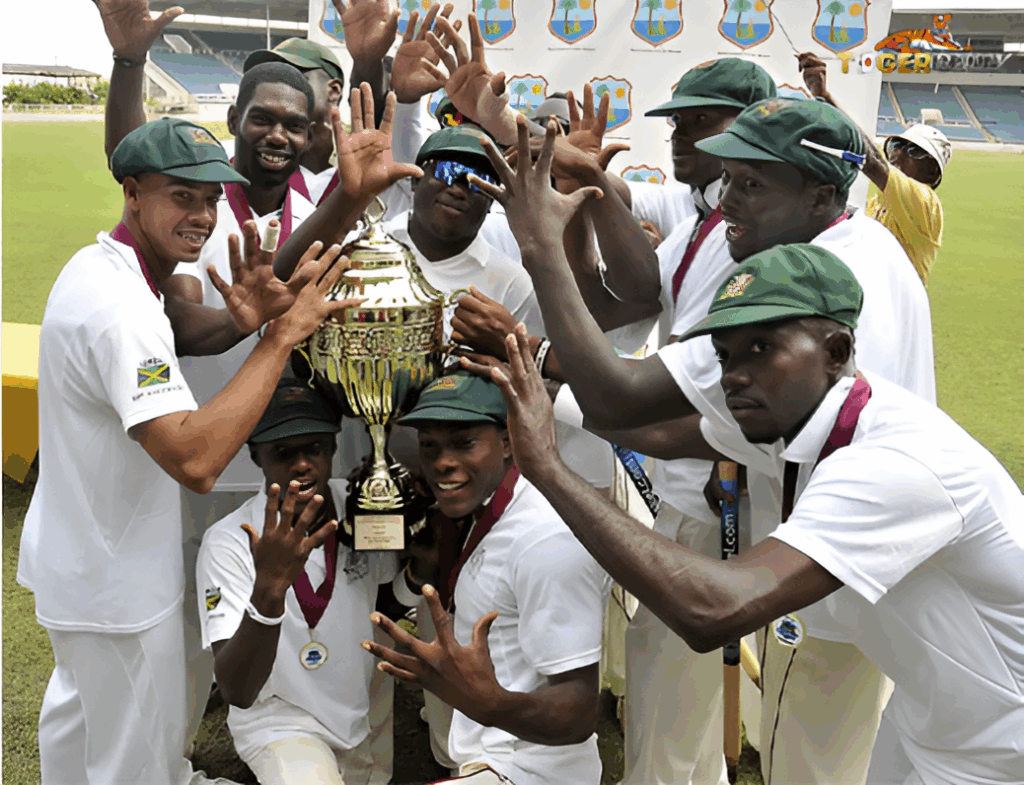
What is Domestic Cricket?
Domestic cricket is the foundation of every cricket country. It’s where future big-name stars are made. For a player to be a hero internationally, they have typically fought it out at home in their country’s domestic leagues and domestic cricket. These are played domestically within the nation and involve teams from various regions, states, or counties.
Domestic cricket isn’t as popular as international matches, but it is crucial. It is just like entering school and getting admission to the high school, where we become proficient by adopting learning and growth. This cricket makes the cricket foundation stronger.
Local cricket is not just one format. From multi-day first-class cricket to the shorter one-day and T20 cricket, it is a replica of the international setup. And the good news? It’s a test of determination, character, and consistency. If a player can excel here, there’s every chance they’ll do great in international cricket.
Why Domestic Cricket Matters in the Global Arena
Domestic cricket is the engine room where players sharpen their craft, learn to perform under pressure, and get their call-up to the national team. Nations with a good domestic setup, such as India, Australia, and England, tend to have more consistent and successful international teams.
Without these competitions, there would not exist a system to spot and groom talent. Try imagining a situation where Virat Kohli did not have the platform of the Ranji Trophy to establish himself. Or Steve Smith did not have any Sheffield Shield to sharpen his game.
Domestic Cricket in India
History and Evolution
India’s domestic cricket network is one of the strongest in the world. It began way back in the 1930s with the Ranji Trophy, named after the great Ranjitsinhji. Decades later, India introduced additional tournaments to complete a comprehensive system that includes players from all over the country.
It aims to offer chances to all cricketers, regardless of whether they come from a large metro or a small village. Under the leadership of the Board of Control for Cricket in India (BCCI), the domestic landscape changed quickly, ushering in professionalism, improved infrastructure, and bigger crowds.
Today, India’s domestic calendar is full of matches of all formats: First-class (multi-day), List A (one-day), and T20. And thanks to TV and streaming, more people are watching, making stars of domestic heroes.
Ranji Trophy: The Heartbeat of Indian Domestic Cricket
The ranji Trophy is India’s most honorable first-class competition that began in 1934. This championship gave us cricket legends like Sachin Tendulkar, Dravid, and Dhoni. Its matches are played across four or five days; it is a test of players’ ability, patience, and endurance. the Ranji Trophy is famous for its hard-fought competition with 38 teams representing states and associations. It’s the direct route to the Indian Test side.
Duleep Trophy
The Duleep Trophy is a twist in itself. While initially played between five zones (North, South, East, West, and Central), it now has teams such as India Red, Blue, and Green, picked by the selectors. This way, the best players from various states get to play with one another, heightening competition as well as exposure of talent. It is a stepping-stone between the Ranji Trophy and international cricket and was the first to try day-night matches with the pink ball.
Irani Cup
The Irani Cup is a standalone game between the Ranji Trophy winner and the Rest of India. It’s an ultra-important match that usually serves as the ultimate test for national selection. A good performance here can bring players into Team India, so it is a critically important game in the domestic season.
Watch the local talents on the cricket pitch with Laser247!!
Impact of Domestic Cricket in India on International Success
India’s emergence as a superpower in cricket is not merely because of the IPL or international fame. It’s all based on a robust domestic structure. Its players, such as Jasprit Bumrah, Ravindra Jadeja, and KL Rahul, sharpened their techniques in these domestic competitions before they became celebrities.
This is how domestic cricket benefits:
- Consistency: Long seasons require players to remain in peak condition over months, not for one game.
- Conditions: From rolling tracks at Chennai to green tops at Mohali, players adapt.
- Competition: The skill and pressure level of matches often equals international matches.
When a player performs well for the Ranji or Duleep Trophy, selectors notice. They do not require hype; they require stats, temperament, and match-winning skills. And Indian domestic cricket delivers that in large amounts.
England’s County Championship

Oldest Cricket Tradition in the Modern Game
The County Championship is the world’s oldest domestic cricket competition, established in 1890. It is the lifeblood of English cricket and a major stepping stone to the national Test side.
The competition consists of 18 county sides, divided into two divisions. It takes place throughout the English summer, from cold April mornings to parched September surfaces. These fluctuating conditions enable players to become resilient and proficient in all conditions.
Why is it significant?
- It’s full of history and tradition.
- It forms future England Test cricketers.
- The lengthy season examines a player’s consistency and patience.
Playing for the County Championship is not about the skills; it also builds mental toughness. Long matches, varied weather, and incessant travel shape all-around cricketers.
Every county features various types of pitches, some seeming and green, some dry and turning. The diversity enhances a player’s technique and mindset.
Even global stars such as Zaheer Khan, Shane Warne, and Allan Donald have featured here, elevating the standards of the competition. Recently, the England County Championship team, Middlesex, approached him to join domestic cricket.
Best English players, such as Joe Root, Ben Stokes, and James Anderson, all progressed through this system. It is perhaps not glamorous, but it still churns out solid, ready-for-Test cricket players.
Australia’s Domestic Cricket Story

The Sheffield Shield: A Stepping Stone to Baggy Green
Whenever two cricket fans are talking about the powerhouse of cricket games, it means they are talking about Australian cricket. There is a domestic cricket league known as the Sheffield Shield, which was established in 1892. It is one of the reputed first-class tournaments in the world.
This game made sharp players like Ricky Ponting, Steve Smith, and more.
Why is it significant?
- It’s the primary path to being picked for Australia’s Test team.
- The matches are difficult and played at a high level.
- Legends such as Don Bradman, Ricky Ponting, and Steve Smith are all featured here.
The Shield is very closely monitored by selectors and reported on extensively in the media. Strong performances can result directly in national selection.
Australia’s pitches differ greatly from one another, and this helps players become adjusters. Shield players become technically good and robust mentally because of this.
Current stars such as Marnus Labuschagne and Travis Head employ good Shield seasons to retain their places in the team. Scoring runs or picking wickets here equips you for international cricket—most say, “If you can perform in the Shield, you can perform anywhere.”
West Indies’ Regional Four-Day Competition

Keeping the Caribbean Flame Alive
The West Indies are well-known for their T20 swagger, but true cricket development happens in the Regional Four Day Competition, Caribbean cricket’s first-class competition. The Regional Four-Day Competition is essential for developing players of the West Indies Team.
Why it matters:
- It’s the prime route to the West Indies Test side.
- Keeps classical Test craft alive among Caribbean players.
- Provides good competition on various islands.
Icons such as Brian Lara and Curtly Ambrose, and current stars such as Jason Holder and Kraigg Brathwaite, all cut their teeth through this system.
With additional support and patronage, the Regional Four-Day Competition can again be a vehicle for developing world-class West Indies Test cricketers.
Enjoy various countries’ domestic cricket with the Diamond Exchange ID!!
Table for quickly comparing the Top 5 Domestic Cricket Teams
Country | Tournament | Format | Teams | Started | Notable Players |
India | Ranji Trophy | First-class | 38 | 1934 | Sachin Tendulkar, Rahul Dravid |
England | County Championship | First-class | 18 | 1890 | Joe Root, James Anderson |
Australia | Sheffield Shield | First-class | 6 | 1892 | Ricky Ponting, Steve Smith |
West Indies | Regional Four Day Competition | First-class | 6 | 1965 | Brian Lara, Jason Holder |
South Africa | CSA 4-Day Domestic Series | First-class | 15 | 1889-90 | AB de Villiers, Kagiso Rabada |
The Global Impact of Domestic Cricket
How Domestic Leagues Feed the International Pipeline
Domestic cricket is the backbone of global success, similar to roots that prop up a tree. It identifies and develops good players, toughens them for stiff competition, and instills mental toughness in them through extended seasons. Adaptability is also enhanced by playing on varying pitches and under different weather conditions. Domestic competitions allow young cricketers to prove themselves against veteran players, gaining confidence before graduating to the international standard.
Challenges Faced by Domestic Circuits Today
The domestic cricket has many issues. Most viewers and media overlook these games if they don’t feature well-known players. Smaller cricket boards don’t usually have funds, and this results in substandard facilities and minimal pay. There are instances where players miss domestic seasons to play in better-funded T20 leagues. Additionally, hectic schedules can prevent top players from playing domestic games.
To remedy this, more TV coverage, increased prize money, and better facilities are required. Backing domestic cricket will develop the game and build stronger international sides in the long term.
The Future of Domestic Cricket
Innovations, Broadcast, and Fan Engagement
Home cricket is evolving to remain thrilling and up-to-date with today’s fast-paced world. Several cricket boards are already taking steps in this direction. Here’s what’s ahead:
- Live Streaming: All online matches so more can view.
- Fan Engagement: Promote these games on social media so fans feel like they are closer to the match, and they also promote these games.
- Day-Night Matches: Day-Night matches will help to gather more people, and the chances of increasing viewership will be higher.
- T20 Leagues: These brief matches can assist in supporting and strengthening longer formats.
- Technology: Data analysis and tracking of players to enhance the way the game is enjoyed by the fans.
What Still Needs Work:
- Match Scheduling: Minimise the overlap of international and domestic games.
- Player Pay: Reasonable pay to retain talent in domestic cricket.
- Infrastructure: Improved facilities, particularly in smaller countries.
- Women’s Leagues: Increased support to develop the women’s game.
Domestic cricket has the potential to be as popular and thrilling as international games if proper plans are made.
Conclusion of the Country’s Domestic Cricket
Domestic cricket might not always hit the headlines, but it’s the pulsing heart of the game. Domestic cricket is the best format to sharpen players’ skills and their patience on the ground; both factors increase the players’ confidence to enhance their games. Countries like India and England are focusing on domestic cricket so they can make a strong foundation.
Every nation’s structure has its weaknesses and positives. But what they all have in common is the vision to develop talent, maintain the culture of competition, and groom players for the final platform of world cricket.
